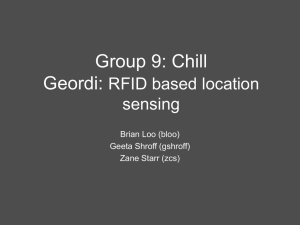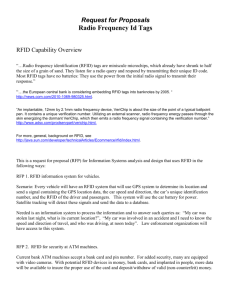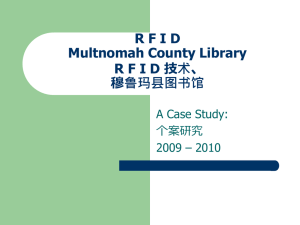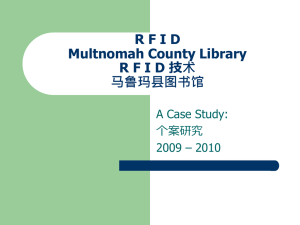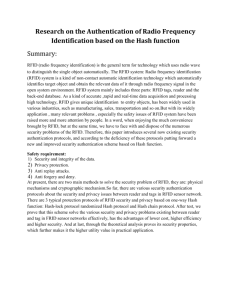Input Device Planning doc
advertisement
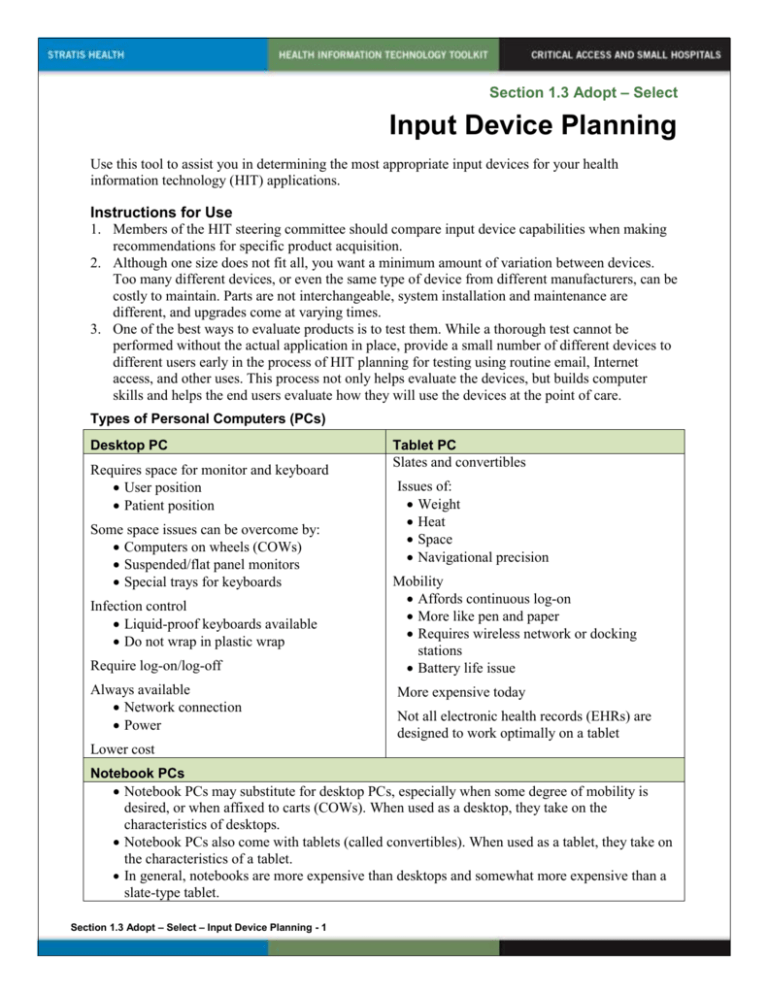
Section 1.3 Adopt – Select Input Device Planning Use this tool to assist you in determining the most appropriate input devices for your health information technology (HIT) applications. Instructions for Use 1. Members of the HIT steering committee should compare input device capabilities when making recommendations for specific product acquisition. 2. Although one size does not fit all, you want a minimum amount of variation between devices. Too many different devices, or even the same type of device from different manufacturers, can be costly to maintain. Parts are not interchangeable, system installation and maintenance are different, and upgrades come at varying times. 3. One of the best ways to evaluate products is to test them. While a thorough test cannot be performed without the actual application in place, provide a small number of different devices to different users early in the process of HIT planning for testing using routine email, Internet access, and other uses. This process not only helps evaluate the devices, but builds computer skills and helps the end users evaluate how they will use the devices at the point of care. Types of Personal Computers (PCs) Desktop PC Requires space for monitor and keyboard User position Patient position Some space issues can be overcome by: Computers on wheels (COWs) Suspended/flat panel monitors Special trays for keyboards Infection control Liquid-proof keyboards available Do not wrap in plastic wrap Require log-on/log-off Always available Network connection Power Tablet PC Slates and convertibles Issues of: Weight Heat Space Navigational precision Mobility Affords continuous log-on More like pen and paper Requires wireless network or docking stations Battery life issue More expensive today Not all electronic health records (EHRs) are designed to work optimally on a tablet Lower cost Notebook PCs Notebook PCs may substitute for desktop PCs, especially when some degree of mobility is desired, or when affixed to carts (COWs). When used as a desktop, they take on the characteristics of desktops. Notebook PCs also come with tablets (called convertibles). When used as a tablet, they take on the characteristics of a tablet. In general, notebooks are more expensive than desktops and somewhat more expensive than a slate-type tablet. Section 1.3 Adopt – Select – Input Device Planning - 1 Speech/Handwriting Recognition Some clinicians prefer to dictate or handwrite. Be aware of issues and plan carefully to determine if speech/handwriting recognition should be a consideration in your HIT selection. Speech recognition, except when used to issue voice commands to a structured data template, does not generate discrete, or structured, data values. As a result, the computer cannot process the information into reports or perform clinical decision support with the information dictated. Speech recognition is not natural language processing. Although natural language processing may be performed using speech recognition, handwriting recognition, or simply keyboarding narrative notes, natural language processing is a highly sophisticated process of extracting structured data values from unstructured information. Although natural language processing is improving and embedded in a few of the more sophisticated EHR systems, in general, it is not available. Speech is digitized and matched against coded dictionaries to recognize words o Older voice recognition systems required discrete speech, requiring pauses between each word o Newer speech recognition systems accommodate continuous speech without pauses Many systems must be trained to understand to understand all words or a sample of words that will be spoken by user o New systems are speaker-independent, requiring no training (in some cases systems improve accuracy with use) Speech recognition is improving in accuracy; however, it is often in commonly used terms rather than medical terms where errors occur. For example, next week may be spoken as “nexweek” which the system cannot understand. Correction must be performed, either: o Retrospectively by a correctionist o Concurrently by the user Speech recognition at the point of care can be cumbersome, unless used primarily to issue voice commands to a structured data template. Even then, many clinicians find this more awkward/less natural than navigating a template by hand, keyboarding, or using standard dictation. Speech recognition is most successful in areas of health care that have a high degree of standardization/repetition and a small amount of content to be dictated. Radiology is an example, although even in this case, standard templates are being used to supplement the narrative notes that result from speech recognition. Handwriting recognition is a very similar process to speech recognition, although not as mature. Bar Code Versus Radio Frequency Identification (RFID) The US Food and Drug Administration required manufacturers to apply bar code labels for all human drug and biological products by April 26, 2006. Bar codes/RFID on packages of drugs have been used primarily for pharmaceutical inventory. More recently, they are being used in hospital medication administration, when patient wrist bands, nursing badges, and unit dose medications are available (2.2 Optimization Strategies for Electronic/Barcode Medication Administration Record (MAR). Such identification processes are also being used to manage lab specimens and track movement of patients, expensive equipment (e.g., computers), narcotics, and employee badges. Section 1.3 Adopt – Select – Input Device Planning - 2 Comparison of Bar Code and RFID Bar Code RFID Line of site requirement, person needs to directly scan bar code RFID tag can be detected hands off Must be visible on outside of product packaging, patient (wrist band), etc. RFID tags can be placed inside of packaging or in the product itself to reduce counterfeiting and black marketeering Bar codes can be impaired by abrasion, dirt, moisture, or packaging contours RFID tags withstand such issues Bar codes have a short read range RFID tags have a longer read range, range varies by type of tag (can extend several miles) Bar codes have no read/write memory capability so can only store the data limited to the bar code and cannot be altered as needed RFID tags are electronic and have read/write memory capability, can store more data and can be altered as needed Bar codes are very inexpensive, but cannot be reused RFID tags are more expensive, and may be reused (the cost of erasing and re-recording data may not be worth the effort) For information on document scanners, see 2.2 Utilizing EDMS and Hybrid Record Risk Management. Copyright © 2009, Margret\A Consulting, LLC. Used with permission of author. For support using the toolkit Stratis Health Health Information Technology Services 952-854-3306 info@stratishealth.org www.stratishealth.org Section 1.3 Adopt – Select – Input Device Planning - 3






